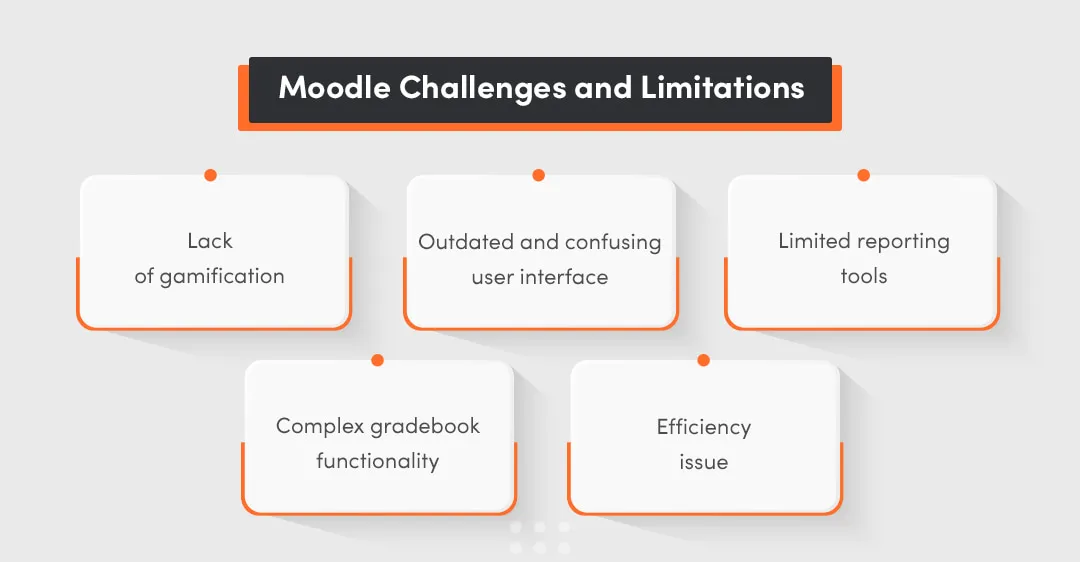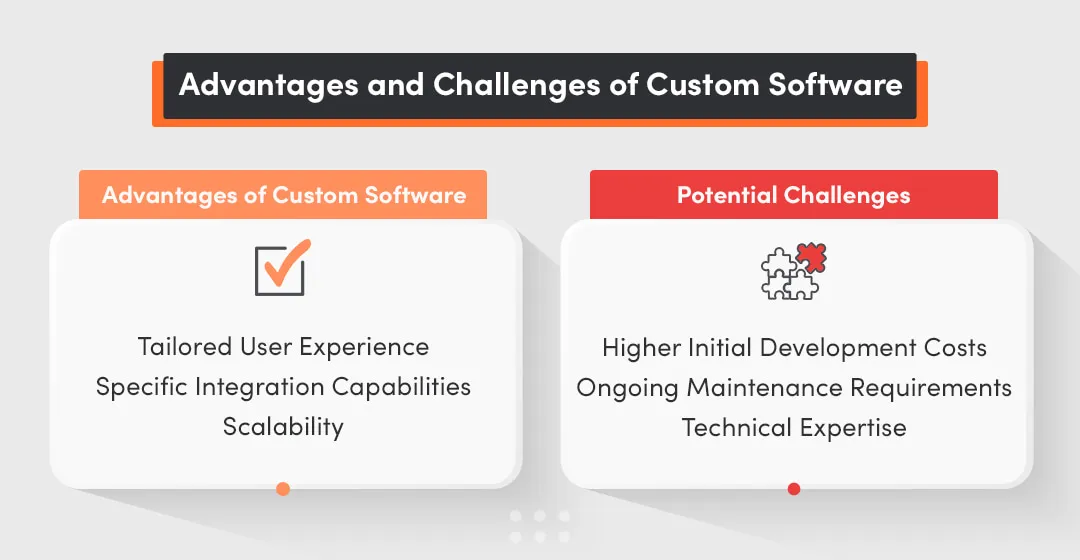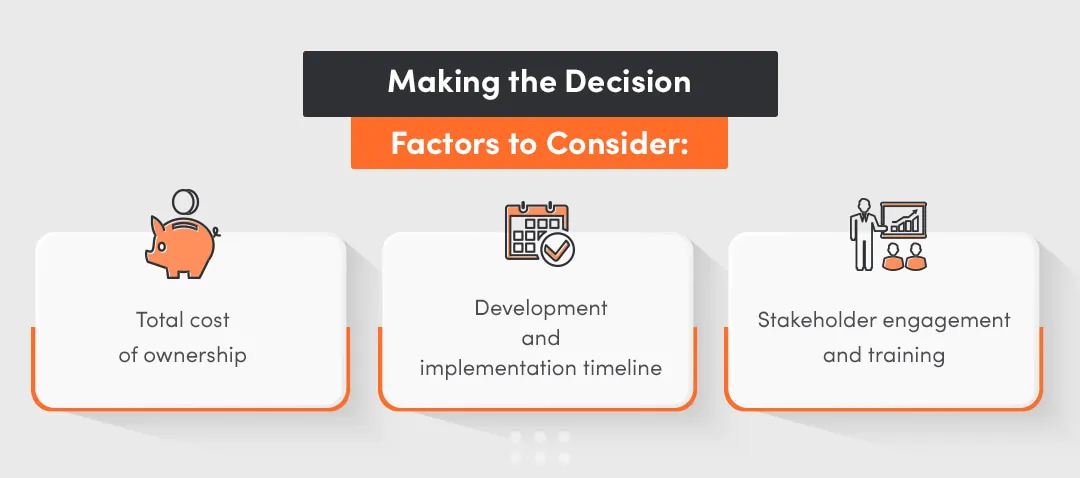If you are using an open-source platform such as Moodle in your organization and hire over 300+ people, there might be a moment when its capabilities are not enough to educate your people smoothly. Logically, investment in custom software is a solution, but in the end, this decision should be made with future goals in mind.
Moodle has been one of the most popular CMS in the educational and corporate training sectors. However, the evolution of digital learning environments and the increasing complexity of organizational training needs have brought to light the limitations of this solution for bigger enterprises.
The growing trend towards digital transformation has increased the need for flexible and customized platforms.
To understand better if your business needs custom software you should understand the benefits and drawbacks of Moodle and custom software to engage in a thorough analysis of how each option aligns with organizational goals. The decision to stick with Moodle or to go with custom software development involves consideration of cost, scalability, user experience, and long-term goals
What will you learn from this article?
- Benefits and problems of Moodle for larger organizations
- Benefits and challenges of custom software for enterprises
- What is the difference between Moodle and custom software?
- Is it easy to move your IP rights?
- What is the total cost of ownership?
- What is the scaling potential in both?
- How Defined Careers got it right?
-
Moodle allows some customization through plugins, but significant changes need development work.
-
Custom software offers complete flexibility for tailoring.
-
Moodle's open-source nature means any modifications remain public.
-
Custom software offers full ownership and exclusivity of developments.
-
Moodle requires external hosting and technical support for scaling, relying on community-driven support.
-
Custom software is designed with scalability in mind and often includes developer support.
-
Moodle is initially cheaper but may incur costs for premium plugins and customization.
-
Custom software requires a higher initial investment but minimizes long-term modification costs.
-
The choice between Moodle and custom software depends on the organization's future goals, with Moodle offering a cost-effective, somewhat flexible option and custom software providing tailored, scalable solutions.
Moodle Benefits and Problems

Moodle is considered a leading open-source LMS. The core advantage of Moodle's open-source framework lies in its customizability through additional extensions, allowing organizations to tailor the platform to their unique educational and training requirements.
This positions Moodle as an attractive option for entities looking to deploy solutions without spending much money.
Key Features and Benefits for Large Organizations
One of its most significant advantages is the cost-effectiveness it offers, enabling organizations to deploy a full-fledged LMS without the substantial licensing fees associated with many commercial alternatives.
Furthermore, Moodle's global community of developers and users has grown a vast library of plugins, extending its native capabilities to include everything from custom grading scales to interactive content modules.
Challenges and Limitations

Despite its strengths, Moodle has limitations, particularly when used by larger organizations with sophisticated needs:
- Lack of gamification
- Outdated and confusing user interface
- Limited reporting tools
- Complex gradebook functionality
- Moodle efficiency
- Customization with additional extensions
How Do Enterprises Benefit From Custom Software?
Custom LMS development is distinguished by its approach to creating highly specialized solutions that are precisely aligned with an organization's unique requirements. This process involves either building a new system from the ground up or extensively customizing an existing platform to enhance its functionality, usability, speed, and integration capabilities.

Advantages of Custom Software
- Tailored user experience
- Specific integration capabilities
- Scalability
Potential Challenges
- Higher initial development costs
- Ongoing maintenance requirements
- Technical expertise
Try our developers.
Free for 2 weeks.
No risk. Just results. Get a feel for our process, speed, and quality — work with our developers for a trial sprint and see why global companies choose Selleo.
Moodle vs. Custom Software - Comparative Analysis
Flexibility and Customization
Moodle's plugin-based system allows for a degree of customization, enabling organizations to add specific features and functionalities. However, this approach is limited by the use of plugins itself, and significant customizations may require extensive development work.
Custom software, on the other hand, offers flexibility, allowing for the creation of a completely tailored LMS platform.
This means that every element of the LMS, from user interface design to specific functionality, can be developed based on the discussed needs. The only limitation is the team and their knowledge, but if they are experts, it shouldn't be a problem.
IP Rights
One of the important differences between Moodle and custom software lies in the rights (IP rights). With Moodle's open-source framework, modifications and customizations technically remain open and accessible. This means the exclusivity and competitive advantage is limited.
Custom software solves these issues by providing organizations with full ownership over their LMS.
This means that any developments, features, or functionalities created as part of the custom solution are the exclusive property of the organization, protecting their investment and innovations from competitors.
Scalability and Support
Moodle's scalability is somewhat dependent on the organization's ability to manage and modify the open-source platform, often requiring external hosting solutions and specialized technical support to handle significant scaling up. The platform's support is primarily community-driven.
Custom software solutions are always designed with scalability, growth, and organizational needs in mind. Moreover, SDHs often offer continuous support after the development is done or offer further development options to make the system even better.
Cost Considerations
Cost comparisons will favor Moodle due to its lack of licensing fees. However, the total cost of ownership can escalate with the need for premium plugins, specialized hosting services, or potential customization.
Custom software requires a higher upfront investment, mostly due to the early development process.
Yet, this initial cost is often rewarded by the long-term benefits of having a fully tailored solution. Also, the process of continuous investments in modifications and adjustments is minimized.
Case Study: Defined Learning LMS
Our client's successful custom project is an online learning platform named Defined Learning, developed to help students and teachers bring real-world experience into the classroom. The project involved a comprehensive set of services like custom development from scratch, UX/UI design, and quality assurance.
The platform, after starting as an MVP in Ruby on Rails, grew to support over 108,000 teachers across more than 5,000 schools in the USA.
It is integrated with systems like the Common App, providing functionalities such as virtual internships, automated reporting, and customized resumes for students. The project shows that Selleo's teams are able to deliver from an initial concept to a constantly improving platform that enhances students' perspectives on potential careers.
For more details, you can view the full project scope of the e-learning platform Defined Learning on Selleo's portfolio.
Making the Decision: Factors to Consider
Organizations should start by conducting a thorough analysis of the pain points and limitations experienced with Moodle. This evaluation helps identify specific features that are lacking or areas where Moodle cannot be improved.

These pain points to consider could be:
- usability issues
- advanced analytics
- custom reporting capabilities
- needed unique functional requirements
To evaluate it completely, we suggest analyzing the 3 areas below:
Total Cost of Ownership
The financial implications of switching from Moodle to a custom LMS encompass more than just the initial development expenses. Organizations must consider the entire lifecycle cost of the LMS, including ongoing maintenance, support, hosting, and any necessary future customizations or scalability.
Development and Implementation Timeline
Setting realistic expectations for the development timeline and planning accordingly is crucial to minimize the impact on ongoing learning activities and ensure a smooth transition.
Stakeholder Engagement and Training
Changing Moodle to custom may affect stakeholders, learners, educators, and IT staff. It’s important to discuss it with these groups early in the decision-making process to gather input on their needs and preferences.
Conclusion
Moodle, with its open-source model, provides a flexible, cost-effective foundation perfect for many learning scenarios. Its community support and extensive plugin library offer significant adaptability but only to some extent.
Getting the most benefits for your organization from Moodle or custom software depends on the goals and objectives you wish to achieve in the future.
On the contrary, custom software allows the creation of an LMS that is flexible and tailored to a company’s specific needs. Despite its cost during the early development stages, it offers much higher customization flexibility, and it is easier to adjust to new features in the future.
The decision of whether to choose one over the other should be based on the analysis of current challenges, desired features, and the overall strategic direction of the organization. Engaging with learners, educators, and technical teams may help the development or suggest a way for future customization of the LMS.





